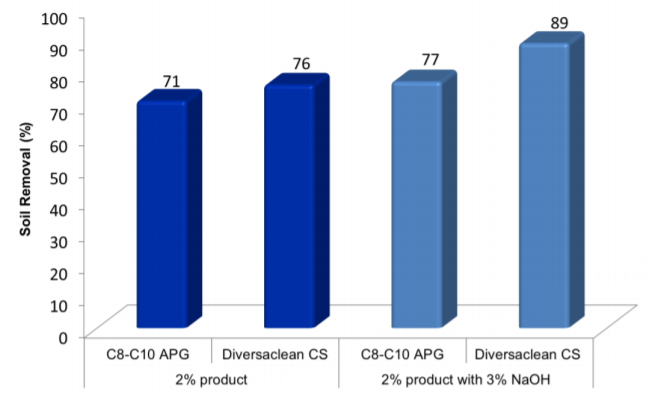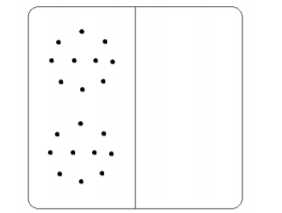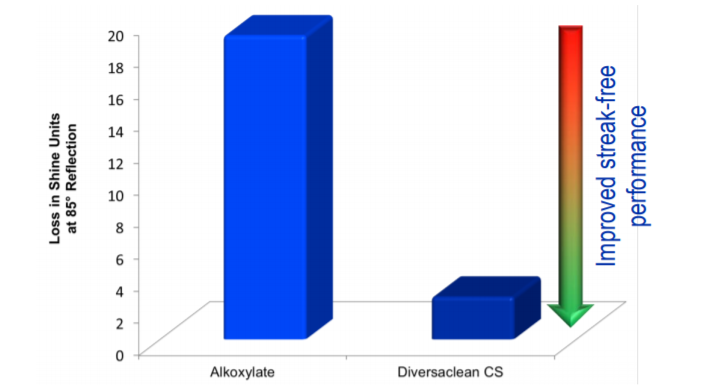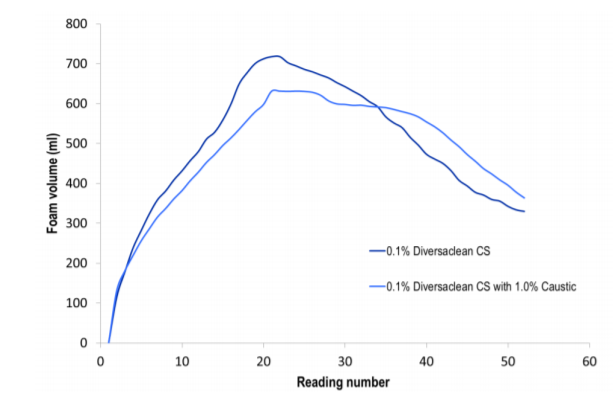Knowde Enhanced TDS
Identification & Functionality
- Cleaning Ingredients Functions
- Technologies
Features & Benefits
- Labeling Claims
- HII Features
- Benefits
- Excellent stability in high alkaline formulations
- Easy to formulate as concentrated or ready-to-use products
- Powerful wetting and cleaning against household and I&I soils
- Readily biodegradable
- Low streaking, excellent for glass cleaners
- >50% bio-based content
- Low surface tension, high foaming
Applications & Uses
- Markets
- Applications
- Home Care Applications
- I&I Cleaning Applications
- Ease of formulating
Diversaclean CS is cold processable at very low temperatures, with no heating equipment required and easy to pump around mixing vessels. It is highly water soluble, with no gel phase and also helps to prevent other surfactants form gelling.
Diversaclean CS is extremely versatile and can be added at any stage of the formulation process, however being added at an earlier stage can help to dissolve less water soluble components of the formulation.
Properties
- Physical Form
- Appearance
- Clear to slightly hazy yellow liquid
- Soluble in
- Water
- Typical Properties
| Value | Units | Test Method / Conditions | |
| Cloud Point (in 1% w/w Aqueous Solution) | 64 | °C | — |
| Initial Foam Height at 1000 ppm | 95 | mm | — |
| Final Foam Height at 1000 ppm (After 5 minutes) | 95 | mm | — |
| pH (at 1%) | 6.6 | - | — |
| Surface Tension at 1000ppm | 27 | mN/m | — |
| Viscosity at 25°C (spindle #3, speed 60 rpm) | 336 | cP | — |
| Wetting Time (0.5%) | 2.0-3.0 | sec | Draves test |
| Wetting Time (1000 ppm) | 7 | sec | Draves test |
| Pour Point | -21 | °C | ASTM D 97 |
| Dynamic Viscosity | 295.6 | mPa.s | — |
| Specific Gravity | 9.13 | gal | — |
Regulatory & Compliance
- Certifications & Compliance
Technical Details & Test Data
- Caustic Stability Data
% Diversaclean CS % NaOH (active) Stable at 40°C after 30 days 2 5 Yes 5 10 Yes Compatibility in Caustic Solutions up to 40% Active NaOH
Diversaclean CS will generate clear, compatible aqueous solutions with up to 15% NaOH (active). If more concentrated levels of caustic are required, Diversaclean CS can be blended with additional alkyl polyglucoside (NatraSense AG-810) at a ratio of 5:3 (CS/APG) to yield clear formulations with up to 40% NaOH (active). Diversaclean blends with APG maintain a cleaning and wetting benefit over APG alone. Total surfactant levels can range from 2-10%, depending on application needs.
- Cleaning performance with caustic
The cleaning performance of Diversaclean CS was tested by treating vinyl tiles with an oily particulate soil. Product test solutions were sprayed onto the test tiles and 3g of the test solution was soaked into a sponge. The tiles were then scrubbed with 5 passes of a Sheen scrub tester and the cleaning efficiency was measured using an X-rite spectrophotometer. The cleaning performance results can be seen in Figure 2.

Figure 2: Cleaning performance results of Diversaclean CS vs C8-C10 APG surfactant
Diversaclean CS gives an increase in cleaning performance, with a 7% improvement on a standard C8-C10 APG surfactant. It displays a 15% improvement on the APG in a 3% caustic solution, demonstrating the improved cleaning performance in caustic formulations.
- Low streaking on surfaces
The streaking performance of Diversaclean CS was evaluated by applying test solutions to half of a mirrored tile using a disposable pipette, as in the diagram in Figure 3.

Figure 3: Pattern for applying test solutions to mirrored tile for streak testing
Immediately after application the surface of the mirror was wiped 10 times using paper tower folded into three and clipped with two binder clip to use as handles so that no downward pressure is applied. The tiles were then left to air dry.
As can be seen in Figure 4 Diversaclean CS displays very low streaking on surfaces, having a significantly lower impact on surface gloss when compared to a standard alkoxylate surfactant alone.
 Figure 4: Streaking performance of Diversaclean CS vs alcohol alkoxylate surfactant
Figure 4: Streaking performance of Diversaclean CS vs alcohol alkoxylate surfactant- Foaming performance with caustic
Diversaclean CS was tested at a concentration of 1g/L in deionised water on a SITA foam tester R2000. The foam build profile was created by agitating the solution at 1200rpm for 10 seconds, then measuring the foam height and repeating this for 20 cycles. The foam decay section of the graph was determined by taking foam height measurements every 20 seconds for 10 minutes. The test was then repeated using a 1g/L Diversaclean CS and 10g/L caustic solution. The foaming profile for Diversaclean CS can be seen in Figure 5.
 Figure 5: Foaming profile of Diversaclean CS with and without excess caustic
Figure 5: Foaming profile of Diversaclean CS with and without excess causticAs can be seen in Figure 5 the foaming profile for Diversaclean CS is unchanged by adding excess caustic (10 times the amount of Diversaclean CS).
Packaging & Availability
- Country Availability
- Regional Availability